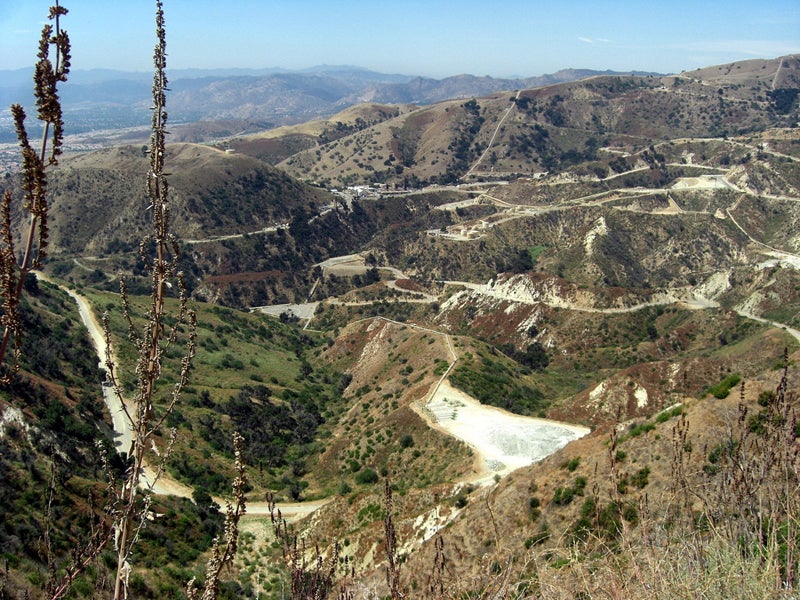Report: Utility’s Negligence to Blame for Los Angeles Methane Disaster
A pattern of deception and neglect led SoCalGas to disregard obvious safety measures that could have prevented the largest methane leak in U.S. history.
For 111 days in 2015 and 2016, more than 100,000 metric tons of methane – a potent greenhouse gas – and other harmful chemicals leaked into the atmosphere from the blowout of well SS-25 at SoCalGas’s Aliso Canyon underground gas storage facility in Los Angeles. The blowout forced the evacuation of more than 8,300 households. Residents exposed to the gas reported nosebleeds, dizziness, and respiratory problems. More than three years later, many report severe health effects.
In May 2019, an independent report commissioned by the California Public Utilities Commission put the blame for this disaster squarely on SoCalGas. In other words, SoCalGas, the largest natural gas provider in the nation, brought us the largest methane leak disaster in United States history.
According to the report, SoCalGas’s pattern of deception and neglect in the decades leading up to the blowout led the utility to disregard obvious safety measures that could have prevented or mitigated the methane leak. Although the California Division of Oil, Gas, and Geothermal Resources (DOGGR) has finalized new rules for managing the equipment at Aliso Canyon, the report makes clear that these rules will not address the “root cause” of the leak: SoCalGas’s callous disregard for the environment and the health and safety of the communities surrounding Aliso Canyon.
SoCalGas’s disregard for safety was not an aberration. The independent report identifies more than 60 leaks at Aliso Canyon going back to the 1970s that SoCalGas chose not to investigate. Forty percent of the wells at Aliso Canyon reviewed in the report had past failures in the casing that enclose the wells and prevent leaks, with an average of two failures per well. According to the report, SoCalGas knew of these leaks and failures but neglected to conduct detailed inspections or evaluate for disaster potential.
In fact, SoCalGas had a two-year plan in 1988 to determine the mechanical condition of the casing in 20 extremely old wells that were originally completed in the 1940s and 1950s. The wells, including SS-25, were prioritized based on gas deliverability, operational history, and length of time since their last workover. SS-25 was given low priority and never inspected. Of the 20 wells designated for study, SoCalGas inspected only seven and found that a vast majority of these wells had compromised casing that impacted the integrity and safety of the wells. Despite this alarming finding, SoCalGas did not investigate the causes of the compromised casings and did not inspect the remaining wells.
In addition to finding negligence, the report also found incompetence. According to the report, SoCalGas should have been able to plug the blowout at SS-25 much sooner. SoCalGas, however, did not conduct the correct modeling in its attempts to plug the leak. Instead, SoCalGas used the exact same strategy in its six unsuccessful attempts. A quote often attributed to Albert Einstein is appropriate here: “The definition of insanity is doing the same thing over and over and expecting different results.” If SoCalGas had competently conducted the correct modeling from the outset, the report finds that SoCalGas could have plugged SS-25 as early as November 13, 2015 — 90 days before SoCalGas actually plugged the well.
SoCalGas did not exhibit basic competency or care, and as a result people and the planet suffered. Given the findings of the independent report, it is shocking that state regulators continue to coddle SoCalGas by approving more infrastructure to pad the pockets of their investors. In February, a judge approved a $119.5 million settlement of the Aliso Canyon leak between SoCalGas and state regulators. A large portion of that money will go to build methane digesters at 12 dairy farms in the San Joaquin Valley. Methane from these dairies will feed directly into SoCalGas pipelines. Once in the pipelines, methane from dairies (also referred to as biomethane) is the same as natural gas at the point of combustion, releasing the same air pollutants when burned. In addition, biomethane relies on the same gas infrastructure, prone to leaks and explosions. The settlement rewards SoCalGas for its truancy with access to even greater amounts of harmful methane.
Careless mismanagement and sheer incompetence created the perfect storm. This report confirms what people in affected communities have known from the beginning: SoCalGas cares more about profits than the fate of the planet or the communities around its facilities. This is important to understand as SoCalGas seeks to bolster its image as a green company.
From submitting comments to the California Air Resources Board on the limitations of the Aliso Canyon settlement agreement to advocating against SoCalGas in proceedings before the Public Utilities Commission, Earthjustice is working with our partners to challenge SoCalGas’s attempt to edit out the worst methane leak in U.S. history and keep California hooked on fossil fuel. We’ve given SoCalGas too many chances, and they continue to sell a product and a vision of California antithetical to our values. Continuing to trust SoCalGas to prevent another environmental disaster or identify solutions to climate pollution would be insanity indeed.
The California Regional Office fights for the rights of all to a healthy environment regardless of where in the state they live; we fight to protect the magnificent natural spaces and wildlife found in California; and we fight to transition California to a zero-emissions future where cars, trucks, buildings, and power plants run on clean energy, not fossil fuels.
